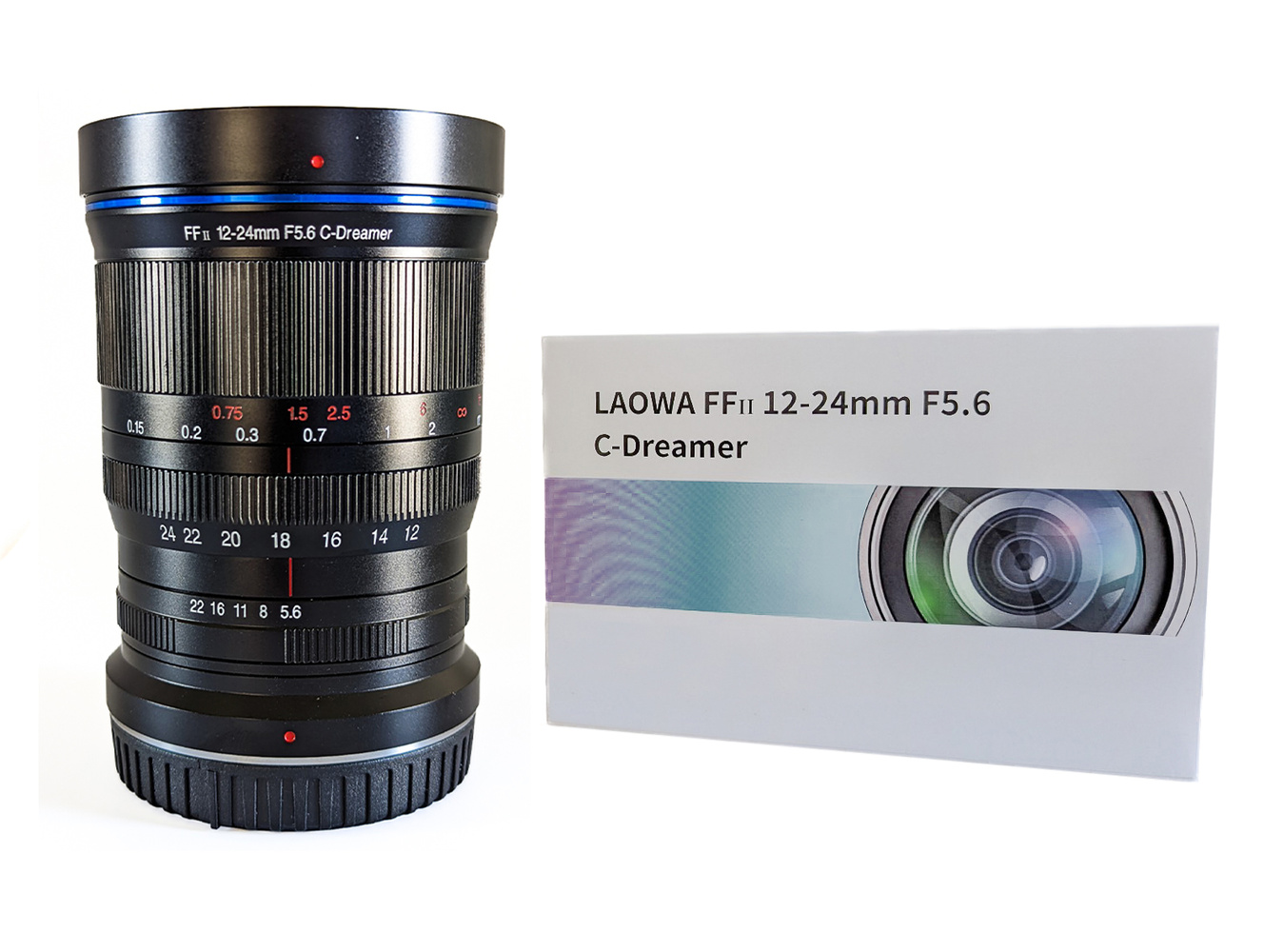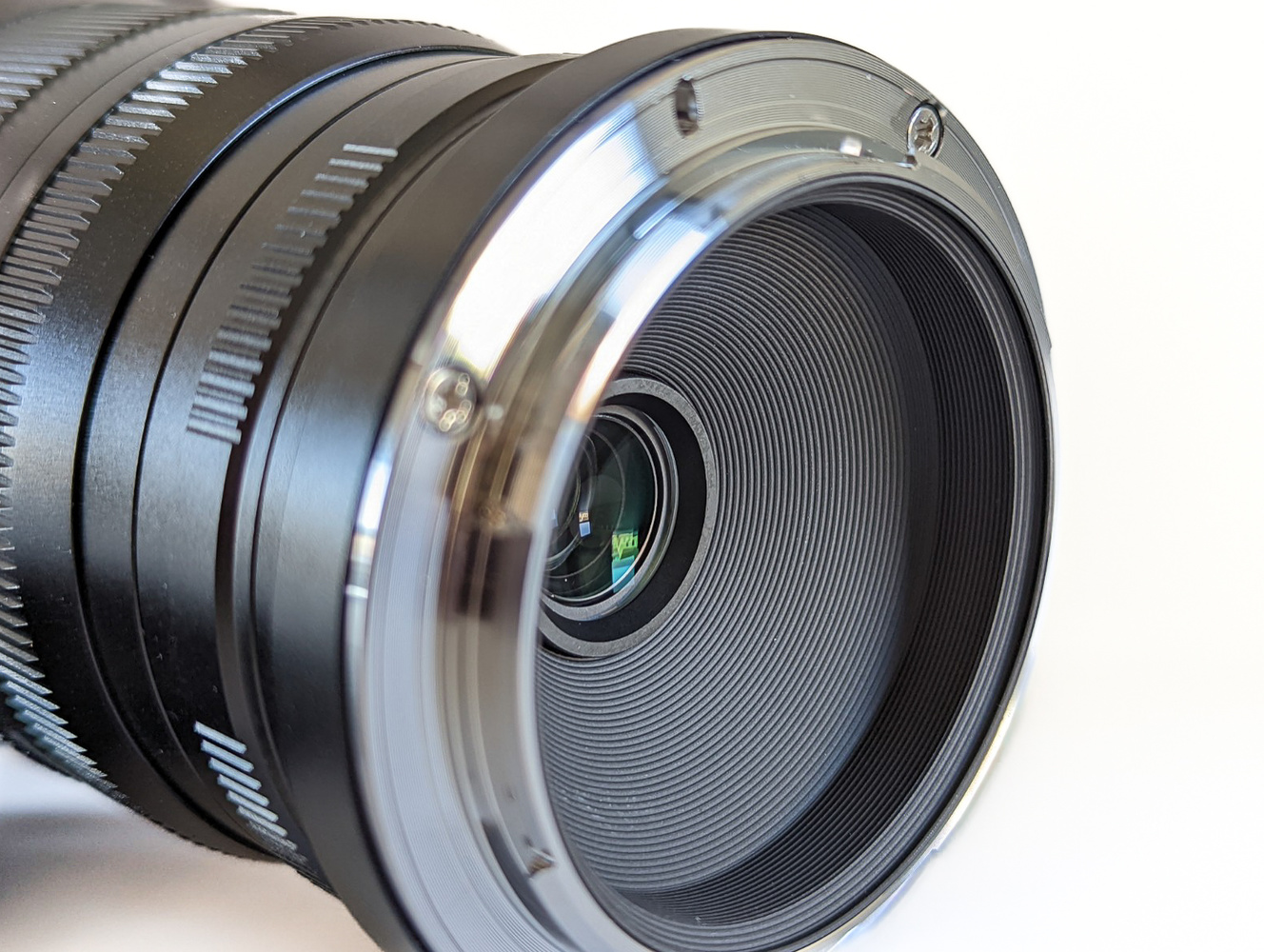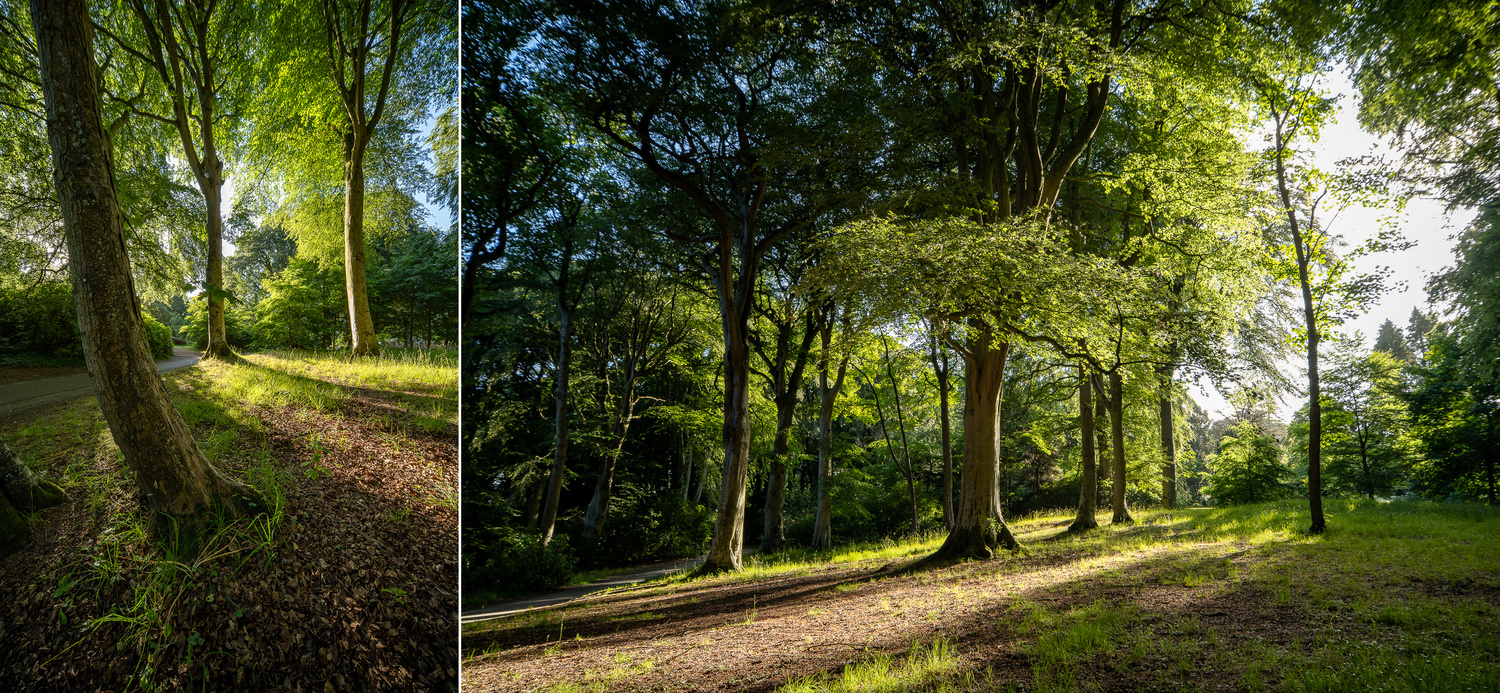Laowa's ever-increasing wide angle lens range is getting larger with the introduction of the 12-24mm f/5.6 C-Dreamer for mirrorless cameras. With a fixed f/5.6 aperture throughout the zoom range, an all-metal construction, 15 elements in 11 groups, is this lens a dream to use?
At the time of writing, Laowa has 17 wide angle and fisheye lenses including a 4mm f/2.8 fisheye and a 9mm f/2.8 Zero-D, to name but a few. The latest addition is the 12-24mm f/5.6 C-Dreamer. They are managing to fill the market with affordable wide- ngle lenses that the leading manufacturers are perhaps missing. So, does a lower price come at a cost for the photographers in terms of image quality? We put the 12-24mm f/5.6 through its paces to find out.

Build and Handling
This fully manual lens, with its metal construction, feels and is solid. There's a very small built-in lens hood that takes the metal lens cap, and there's also an accompanying 77mm filter ring, as the lens itself has no filter threads. The filter ring is also metal; it is best to leave that on when out shooting.
The lens weighs only 479 g and is quite compact at 84 mm, so it won't break your back or take up much space in your camera bag. I found this a nice size of lens to use when I was shooting. The aperture, focus ring, and zoom ring were at a good distance between each other, and the knurls were prominent enough that when using either the viewfinder or back screen, I didn't have to feel my way around the lens for the correct adjustment. The aperture ring solidly clicks into place in full stop increments and the zoom and focus rings are both smooth. On that note, I wouldn't use the lens for filming unless you were locking off the aperture plus there is significant focus breathing.


Performance
It's an enjoyable lens to use once you move away from anything above 20mm due to the softer images. Although it does ok from 20mm to 24mm, it is just ok, and if you are looking for sharper images at these focal lengths, I'd use another lens unless you are seeking a softer look for your images. The softness is not entirely detrimental, but after you have photographed at the other focal lengths, you will notice a marked difference. Perhaps shooting between 20-24mm is to give you the dreamy soft images, as the name suggests.
The images below were taken at 12mm and f/5.6, with the focus on the lower third. The top image shows the entire field of view with a gradual drop-off of focus, which is a good thing. The second image is a 100% section crop to let you see from this the sharpness at this aperture.

 A wide 12mm on the Nikon Z 7II was fun to use, and I did spend some time shooting static shots from a tripod at both focal lengths so that I could see how the lens performed with different subjects. The image below, although not compositionally pleasing, was photographed to see the distortion effect on both the grass and the leaves in one image. The effect was quite pleasing to the eye from a creative perspective. Focus-stacking would need to be employed if you were to use this distortion creatively.
A wide 12mm on the Nikon Z 7II was fun to use, and I did spend some time shooting static shots from a tripod at both focal lengths so that I could see how the lens performed with different subjects. The image below, although not compositionally pleasing, was photographed to see the distortion effect on both the grass and the leaves in one image. The effect was quite pleasing to the eye from a creative perspective. Focus-stacking would need to be employed if you were to use this distortion creatively.

The 15 cm minimum focussing works as stated (image above) and produces clean sharp acceptable images.
Vignetting is apparent on every image at every focal length and more so at the wider focal lengths. Although it's not as severe as the Laowa 10mm f/4, it is there and is something you need to take into consideration when taking the shots. It is easily and quickly corrected in post, but I do prefer to be in control of vignetting, post or otherwise. Shooting at 12mm to around 20mm, and at apertures between f/8 and f/11, the lens performed at its best and produced some good, clean, and sharp images, even in some cases at 24mm after some structure and sharpening was applied.
Shooting at 12mm to around 20mm, and at apertures between f/8 and f/11, the lens performed at its best and produced some good, clean, and sharp images, even in some cases at 24mm after some structure and sharpening was applied. Sharpness was generally ok across the image, dropping off towards the edges when the distortion comes into play, and this can be quite severe depending on the relative distance to your subject matter, the subject matter itself, and choice of focal length.
Sharpness was generally ok across the image, dropping off towards the edges when the distortion comes into play, and this can be quite severe depending on the relative distance to your subject matter, the subject matter itself, and choice of focal length. With it's five-bladed aperture, you have 10-point sun stars aplenty at practically every aperture and are easily achievable.
With it's five-bladed aperture, you have 10-point sun stars aplenty at practically every aperture and are easily achievable.
The Laowa 12-24mm is no exception to lens flares and veiling. Chromatic aberration in certain circumstances can be quite severe as you know and can be rectified in Lightroom, but with the image bottom right, which also shows the lens veiling (circled), no amount of tweaking could lessen the chromatic aberration. I could've simply bracketed to resolve this, but I prefer to see how the lens performs in a single image for the purpose of reviews.
What I Liked
- The field of view at the wider focal length
- The size and weight of the lens.
- Metal lens cap
- Sunstars galore

What I Didn't Like
- No electronic connection, so no EXIF data
- Chromatic aberration, although not too prominent, is visible in the higher-contrast shots
- Softness throughout the apertures when shooting at anything above 20mm
- Distortion control with certain subjects
- Small lens hood, so the lens cap and filter ring should be left on
Conclusion
Due to the wider focal length, this is a lens worth considering for architecture or landscape depending on the type of shots you are after. Whether creative in the landscape or capturing the entire building, it does have its positive points. The wider focal length was fun to use on the Nikon Z 7II, with my next nearest lens being the Nikon NIKKOR Z 14-30mm f/4 S lens, This extra 2mm does provide the capacity for creative shots but comes with caveats such as the distortion, the vignetting, and fringing, so this has to be taken into account when planning your shots.
From my own point of view, I couldn't use it for woodland scenes due to the distortion and fringing, but can see its advantages when it comes to the wider open landscape and sunsets, where depending on the type of light, it could produce some softer style images. Used creatively, the distortion could provide for some interesting shots with the different subject matter. That's not a comment on the sharpness of the lens; it's simply an observation of the lens' potential in certain circumstances.
You can purchase your copy here.







Fringing
distortion
vignetting
subpar IQ from 20-24mm
no EXIF data
manual focus only
..... there are just way too many shortcomings for me to consider this lens.
I could find workarounds for one or two of these weaknesses, perhaps even three of them. But 6 major shortcomings in one lens? I just don't know how I could overcome so many issues, all of which are bothersome when shooting or editing the resultant images.
If Laowa would have put a lot more resources into R&D, to clean up some of these shortcomings, then I would gladly pay a few hundred more dollars for a 12-24mm zoom. The problem with making it so cheap is ..... well, you get what you pay for.
I will say that I appreciate the 15mm minimum focus distance, and the 0.4x magnification that it yields. This makes it viable for wide angle close-up work, and that is a really important capability. Laowa is leading the world in wide angle macro and close-up magnification capabilities, and I praise them for that!
I'm interested. It's not a focal length I use enough to justify spending more money on a autofocus version.